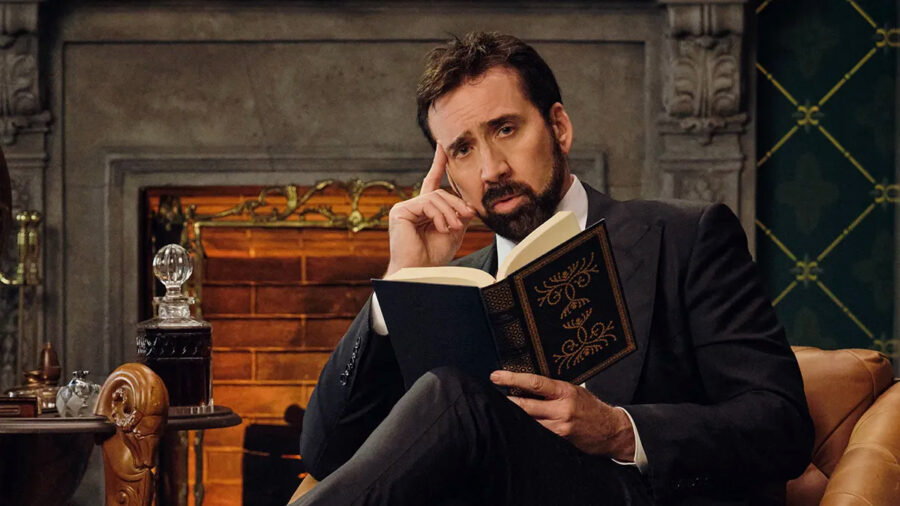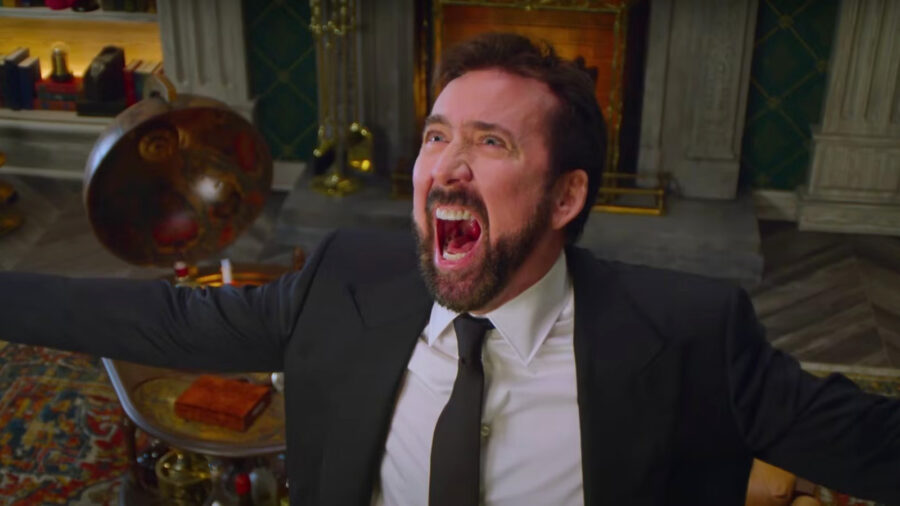Nicolas Cage Netflix Docuseries Is As Profound As It Is Profane

History of Swear Words begins with Nicolas Cage standing up from his comfy chair, looking directly into the camera, and letting out the longest, hardest, deepest, and loudest f-bomb of his career. But this six-part Netflix docuseries is more than just celebrities swearing for the fun of it; it’s educational. Through its excessive use of four and five-letter words, History of Swear Words combines shock-value, etymology and linguistic studies, and profanity (obviously) to show us how some of our favorite swear words have evolved over time and taken on entirely new meanings throughout the ages.
An Asterisk-Heavy Rundown

Leading off with the mother of all swear words, History of Swear Words kicks off with an exploration of “f*ck,” and then the following episodes give similar treatment to words like “sh*t,” “b*tch,” “d*ck,” and “p*ssy,” before ending on the arguably more tame and reserved, “damn.”
Throughout each 20-minute episode, each of the six swear words are broken down by celebrities like Sarah Silverman, Nick Offerman, Nikki Glaser, Jim Jefferies, Patti Harrison, Open Mike Eagle, and Zainab Johson, to name a few.
Not unlike a university elective that aims to break down the historical origins and evolution of these problematic profanities, History of Swear Words also introduces linguistic experts with actual academic credentials like Benjamin K. Bergin, Anne H. Charity Hudley, and Mireille Miller-Young.
Breaking Down The Historical Context

Providing historical context for each swear word, Nicolas Cage sets up each episode of History of Swear Words with an opening monologue, and the linguists and comedians in question demonstrate the various applications in both modern and historical contexts. Joining in on the fun is Kory Stamper, a former editor for the Merriam-Webster dictionary, who also specializes in profanities and their use.
For example, did you know that the F-word’s origins weren’t necessarily vulgar? For hundreds of years, and to the best of our current understanding, the word is most likely derived from a medieval Dutch verb (around the year 1200) that meant to strike, or knock. It wasn’t until centuries later that the common uses of the word that we’re more familiar with came to be.
Updating Your Lexicon

As educational as History of Swear Words may be on its surface, series writers Joel Boyd and Sara Schaefer knew exactly what they were doing when putting this unscripted series together because the talents involved with this production get quite creative. Through their rapid-fire approach to turning as many unique phrases as humanly possible, you can’t help but bust out a legal pad and scribble frantically each and every time you hear a combination of curse words that you definitely want to use at the right moment in your day-to-day life.
Not Just Negative Connotations

For all of the flak that swear words have always received, most of their modern uses in History of Swear Words demonstrate just how much the English language has changed over the centuries. While the B-word was originally assigned to a female dog, it eventually shifted to be a derogatory term geared toward women, before then becoming a term of endearment and solidarity among the same group of people.
The dozens of examples that are rattled off to demonstrate this point in the “B*tch” episode prove that not only context is important, but also inflection and intent of the speaker in question.
History Of Swear Words Is Streaming On Netflix


GFR SCORE
You can plow through History of Swear Words in its entirety in just two hours, and if you’re looking to educate yourself while having a whole lot of fun, you can stream the docuseries on Netflix with your friends while turning some colorful phrases of your own. If you get yourself into trouble, you can talk your way out of it by letting everybody know that Nicolas Cage put you up to it. If you’re easily offended, you may want to sit this one out, but if your curiosity is getting the best of you, just fire up the streamer and have fun with the premise.













